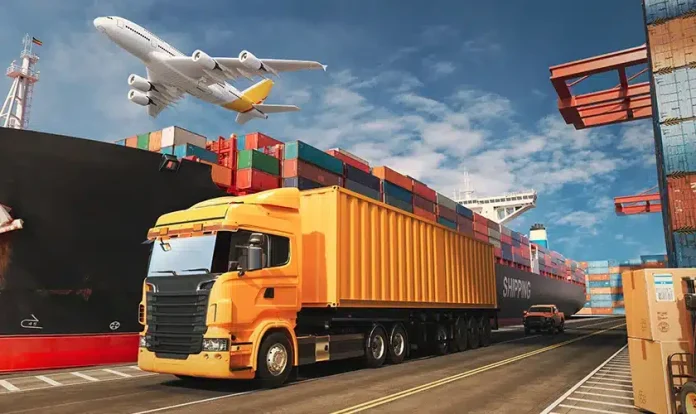As the push to cut carbon emissions in transport becomes a global priority, Africa still relies almost entirely on roads to move its goods. Road transport accounts for nearly 80% of the continent’s freight traffic, while rail and maritime shipping remain largely sidelined. Yet both offer more sustainable, lower-emission options, and are often more cost-effective over long distances.
This road-first model, a legacy of outdated infrastructure planning, is proving costly for Africa. Roads are wearing out, trucks are consistently overloaded, rural areas remain cut off, and logistics costs are among the highest in the world. Yet a single freight train can replace up to 50 trucks, dramatically cutting carbon emissions. According to the World Bank, rail generates 70% less CO₂ per ton-kilometer than diesel-powered road transport.
Why Africa Remains Tied to Road Freight
Rail and maritime freight could help reduce Africa’s carbon footprint while improving efficiency, but deep-rooted structural barriers are holding them back.
The biggest challenge is chronic underinvestment. Most large-scale rail and maritime transport projects are either behind schedule or only partially built due to a lack of reliable funding.
Public policy is another issue. Despite the ambitions outlined in the African Maritime Transport Charter, national strategies often fall out of step with broader regional goals, slowing progress toward truly multimodal corridors.
The logistics sector also lacks providers that can offer integrated solutions combining road, rail, and sea. Regulations and tax systems continue to favor road freight, leaving alternative modes at a disadvantage.
Scattered Projects Show Awareness, But Broader Impact Is Still Missing
A few projects suggest that awareness is growing. In West Africa, efforts are underway to overhaul the Abidjan–Ouagadougou rail line. A broader initiative is looking to link Abidjan, Ouagadougou, Niamey, Cotonou, and Lomé in a circular rail network that would connect ports with landlocked countries, helping to ease pressure on the roads.
In East Africa, Kenya’s Standard Gauge Railway (SGR) between Nairobi and Mombasa has reduced port transit times by a factor of 14. In southern and central Africa, notable projects include the Kazungula route between Zambia and Botswana, the Lobito Corridor linking Angola’s coastline with the Democratic Republic of Congo and Zambia, and efforts to rehabilitate Zimbabwe’s railway system.
North Africa is moving as well. Egypt and Sudan are planning a rail line more than 900 kilometers long, connected to roadways and several sea and river ports.
In addition to rail, some countries are turning to short-distance coastal shipping, known as cabotage, as a way to reduce road traffic. Integrated into multimodal corridors that link sea, rail, and road, cabotage could lower both emissions and congestion.
This strategy is backed by the African Charter on Maritime Transport and the 2050 African Integrated Maritime Strategy. Both call for strengthening Africa’s shipping fleet and improving maritime connectivity across the continent.
Some progress is already visible. In 2025, Nigeria revived its Cabotage Vessel Financing Fund (CVFF) to support local shipowners in acquiring vessels. In Mozambique, two new cabotage ships launched in April 2025 mark a similar commitment to embedding maritime freight into national logistics systems.
AGL and the Push for Cleaner, Smarter Logistics
Africa Global Logistics (AGL) is well-positioned to lead this transition. Through its operations like Sitarail in Côte d’Ivoire and Burkina Faso, and Camrail in Cameroon and Chad, the company links ports, rail lines, and roads with integrated logistics services.
AGL has also made environmental sustainability part of its core mission. Its “Green Terminal” label and membership in the United Nations Global Compact show its commitment to lowering emissions. Its innovation program, “Accelerate,” supports African startups developing sustainable logistics solutions.
To build a low-carbon, competitive logistics network, Africa needs to channel investment into interconnected corridors identified as strategic under the African Continental Free Trade Area (afcfta). This means harmonizing standards, simplifying customs procedures, offering tax breaks for greener transport modes, and supporting operators with the capacity to run full multimodal supply chains by sea, rail, and road.



